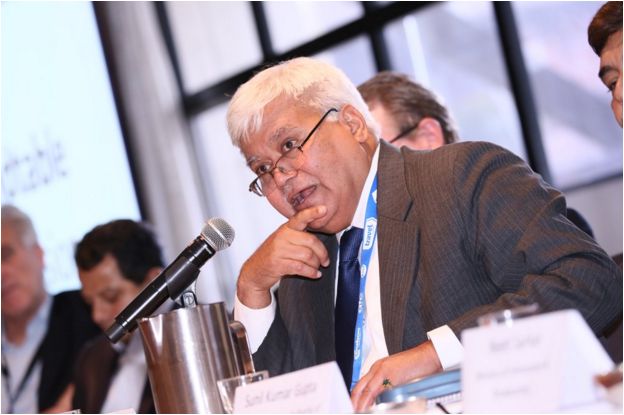
Indian telecom regulator TRAI today shared several measures to reduce call drops.
TRAI said there is an urgent need to increase the number of cell towers as mobile towers do not have an unlimited capacity for handling the current network load.
TRAI headed by RS Sharma said: “There is an urgent need to increase the number of the towers so as to cater to the demands of a growing subscriber base. At the same time, problems like removal of towers from certain areas by authorities should be adequately addressed.”
Technical Paper on Call drop in Cellular Networks released by the Telecom Regulatory Authority of India (TRAI) on Tuesday said the growth rate of mobile towers supporting 2G networks has reduced with the increase in the usage of 3G networks.
Vodafone India has 132,446 towers as of September 2015. 92,672 2G sites are handling 164.6 million 2G subscribers, while 39,774 3G sites are managing 23.6 million 3G subscribers.
The investment of Vodafone India rose 3.4 percent to Rs 3,627 crore in the first half of fiscal 2016, while its mobile user base increased 8.2 percent to 188.2 million. Capex to sale ratio fell to 16.5 percent from 16.9 percent in the first half ended September 2015.
TRAI’s notification asked telecom network operators to compensate subscribers on call drops from January 1 next year at the rate of a rupee for each such failure. This was opposed by COAI representing telecom operators such as Bharti Airtel, Idea Cellular, Vodafone India, etc.
TRAI in its technical paper has suggested that measures like dynamic channel allocation, multiple call routing and optimised resource management can be employed by the telecoms. In addition, usage of mobile signal boosters through the telecoms at users’ buildings or premises.
According to TRAI, some prioritization schemes like measurement-based prioritization scheme, Call Admission Control Protocol, Guard Channels, Handoff Queuing and Auxiliary Stations essentially need to be incorporated by TSPs to reduce call drops.
The report said while the subscriber base in the country is growing very fast, the mobile telecom infrastructure is not growing at the same pace and immense pressure is being put on to the existing facilities, leading to a dip in the quality of services (QoS) provided.
Call drop, affecting the quality of experience of the subscribers, can take place due to a variety of technical issues, including inadequate coverage; problems with the quality of signal; interference; network congestion; and network failure.
The TRAI monitored a few network-related quality of service (QoS) parameters in a cellular mobile telephone service network before it arrived at the conclusion. The parameters are – network availability, connection establishment, connection maintenance and points of interconnection.
An analysis of the traffic channel (TCH) call drop rate was carried out for various telecoms in Delhi circle reveals the operators are generally meeting the TRAI benchmark of TCH call drop less than 2 percent. But a drill down of the values at cell level shows that there are several cells that have much higher TCH call drop rate, TRAI said.
The TCH call drop does not reveal the extent of number of areas or localities with worst call drop rate. Therefore benchmarks are prescribed for another parameter, worst affected cells. Though the operators are generally meeting the benchmark of 95 percent, a drill down of the values at cell level shows that there are around 15 percent cells not meeting the benchmark.





